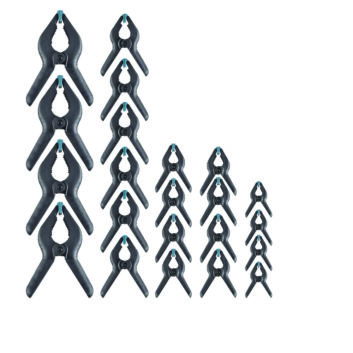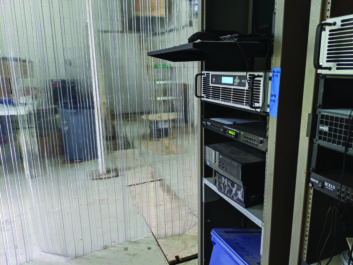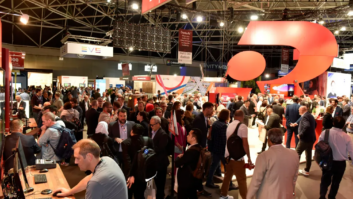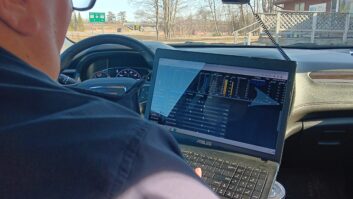We’ve written about electrolytic capacitors lately. I found a funny video of what happens when you mistakenly connect the “+” voltage to the negative terminal of an electrolytic in a simple flasher circuit. Take a look below (and don’t try it at home).
★★★★
While we’re on the subject of capacitor education, have you heard of ultra-capacitors? A brief tutorial explains the ultra-capacitor and its ability to store tremendous amounts of energy. Watch it below.
Capacitors of this size are used to dump hundreds of amps quickly; one application is handling the sudden stops and starts in electric cars. In the experiments in the video, you can see them used to vaporize bits of metal and circuit board traces. These are powerful components, not to be played with, as you will see. In addition to explaining some capacitor theory, the video demonstrates how dangerous innocuous components like capacitors can be.
★★★★
Paul Sagi writes from Malaysia that the company SDRplay has released a software update that allows you to scan a wide swath of bandwidth using a software-defined radio. For those new to this technology, SDRs replace traditional components like mixers, filters and amplifiers inside a receiver using software on a personal computer to replicate those component effects.
This new software permits rapidly scanning in 10 MHz (or less) chunks over the SDRplay’s frequency range. It’s a software-defined spectrum analyzer! See www.rtl-sdr.com/tag/spectrum-analyzer-2 for more info.
Paul writes that years ago he had equipment on the bench and physically adjusted tuned circuits. Now that function is all handled in software, which makes sense; tuning a filter simply changes the mathematical function of the filter, and computers now have the capability to perform the math quickly enough.
★★★★

My Telos colleague (and SBE board member) Kirk Harnack found a virtual bonanza for engineers at Home Depot! It’s a 22-piece reinforced spring clamp set, made out of fiberglass nylon. The best part? The set costs less than $10 for 22 clamps! These aren’t cheap clamps, either. They have non-slip grip handles and vinyl tips to protect the work they are gripping.
At homedepot.com, enter 302755768 in the search field to find this.
Readers who have seen my Workbench presentations for the SBE may remember using the spring clip on a clipboard to hold components while soldering. With the variety of sizes in this set, there’s a clamp for any size job.
[Scarlet Knights’ Station Gets a Fresh Start]
★★★★
You know how important it is to conserve your resources, even if it’s cool air. Kevin Wagner is the operations director for Eagle Communications in St. Joseph, Mo. Not long ago, Kevin invested in a new, smaller transmitter, and the upgrade left him with a large empty room.

The snag was that he was now cooling all that empty space. He needed an inexpensive means to reduce the size of the conditioned area. Sure, he could have built a wall, but what if a future tower lessee required the empty space to be cooled again? Fig. 2 show’s Kevin’s solution.
You see these plastic flaps used in refrigerated storage areas in supermarkets; they keep the cool air contained, but the overlapping flaps can be parted to permit entry into the cooled area. Plus, the fact that the plastic flaps are clear, you can see if someone enters the building while you are working.
These freezer curtain strip sets run between $80 and $200, depending on your size requirements. Search “freezer curtain strips” on Amazon or Google.
★★★★
Readers enjoyed the EAS loop antenna project we told you about from Ken Beckwith, EMF field engineer. Several readers have inquired about the physics behind the wiring method used; Ken has been gracious enough to explain.
The question dealt with grounding the shield of the conductors. In Ken’s design, the shield on the wiring is the primary of a transformer that actually receives the AM signal. The wire conductors form the secondary of the transformer, and provide the signal to the RF connector going to the receiver. If the shield was not grounded, there would be no voltage generated in the loop.
Not everyone knows all the tricks and tips you’ve used for years. Share your ideas in the pages of Workbench — help other engineers while you qualify for SBE recertification credit. Send tips and high-resolution photos to [email protected].
John Bisset has spent 50 years in the broadcasting industry and is still learning. He handles western U.S. radio sales for the Telos Alliance. He holds CPBE certification with the Society of Broadcast Engineers and is a past recipient of the SBE’s Educator of the Year Award.












